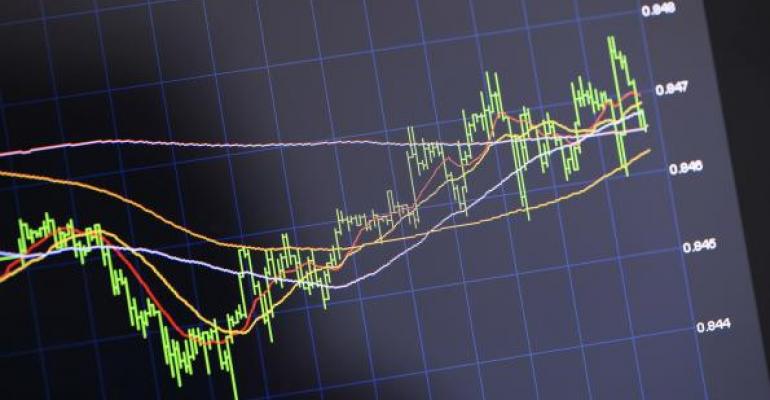You don’t get to see a chart like the one below very often. See the wedge scribed by the dotted lines? That’s pattern been forming since last December and normally is predictive of a big down move.
The chart describes vagaries in the price ratio of the SPDR Gold Shares Trust (NYSE Arca: GLD) and the Market Vectors Gold Miners ETF (NYSE Arca: GDX). The metric gauges investor enthusiasm for bullion over the shares of gold producers. As you can see, metal’s been favored over paper, albeit in fits and starts, over the past four years.
In December, though, the ratio started to show signs of topping, as most of the bad news about gold miners’ weakened balance sheets were seemingly discounted in GDX’s price. The ratio, now just under 6-to-1, seems headed to a test of support near the 5.4 multiple. A break below could set up a decline to a 4 multiple.
Such a decline means one of three things: interest in bullion declines significantly, value-minded investors aggressively scoop up producer shares or some combination scenario.

GDX, which tracks an index of 39 mining companies, is trading at the $20 level now. On its technical merits, the ETF seems poised for an intermediate-term move to $34, a level not visited since 2013.
Lots of investors, however, distrust technical analysis, preferring to concentrate on market fundamentals. The problem with an index fund like GDX is that are so many sets of fundamentals – 39 of ‘em. Since GDX’s top five holdings account for 30 percent of the fund’s assets, we can save ourselves a lot of work if we deem them bellwethers for the sector.
Judging from the companies’ financial statements, the leaders seem to steering GDX over a cliff. By one measure, in fact, warning signs of impending insolvency are being flashed for the ETFs top five components.
The Altman Z-score, a weighted sum of factors including a company’s earnings, assets, liabilities, equity market value and other measures, is the unified field theory of financial strength. A score below 1.8 indicates a high likelihood of financial embarrassment while a tally above 3.0 denotes a safe company.

On the basis of their Z-scores alone, none of GDX’s top holds should be considered safe, most especially Newcrest Mining. By extension, then, shouldn’t GDX be considered a bad bet? Just how much discounting have GDX investors really done?
Brad Zigler is REP./WealthManagement's Alternative Investments Editor. Previously, he was the head of marketing, research and education for the Pacific Exchange's (now NYSE Arca) option market and the iShares complex of exchange traded funds.





